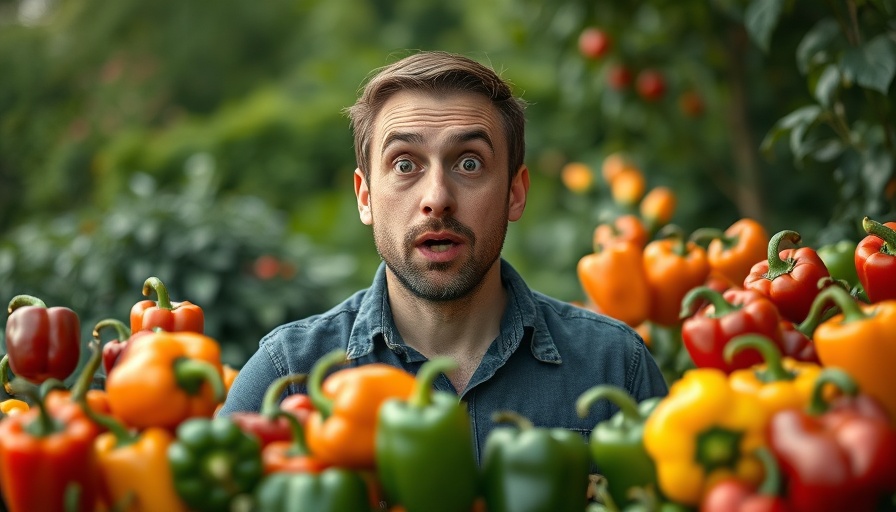
March Magic: The Perfect Time to Plant Peppers
As the chill of winter fades away, March heralds the onset of spring—a season of renewal, vibrant blooms, and, most importantly for gardeners, the perfect time to plant a variety of peppers. Whether you're an experienced green thumb or a budding enthusiast, planning your garden now can lead to a bountiful harvest in the months to come.
The Versatility of Peppers in Your Garden
Peppers, ranging from mild bell to spicy jalapeños, offer a diverse addition to any vegetable garden. They thrive in sunny conditions, requiring at least six hours of direct sunlight daily. Incorporating peppers into your garden design not only enhances the aesthetic appeal but also provides nutritional benefits. Rich in vitamins and antioxidants, they can be enjoyed fresh in salads, roasted, or even in homemade salsas.
Kickstart Your Indoor Gardening
For those in colder climates, starting pepper plants indoors is essential. According to gardening experts at Pepper Geek, seeds should be started approximately 6-8 weeks before the last frost date to allow plants to mature before transplanting them outdoors. Utilizing grow lights and maintaining warm conditions (around 70°F) during germination will ensure robust seedlings ready for their outdoor debut.
Creating the Ideal Growing Environment
For successful pepper growth, soil quality is paramount. Well-draining, nutrient-rich soil mixed with organic compost provides a solid foundation for your plants. Planting in raised beds or containers boosts drainage and allows for temperature regulation, making it an excellent choice for maintaining a fruitful vegetable garden.
Hardening Off: Transitioning Your Plants Outdoors
Once your seedlings are healthy and about 2-3 inches tall, it’s time to start the hardening-off process. This method gradually acclimatizes young plants to outdoor conditions. Begin by placing them outside for short periods during the day, slowly increasing their time outdoors. This adaptation is crucial in preventing sunscald and other stress that can damage delicate seedlings.
Maximizing Your Pepper Yield
Incorporating best practices in fertilizing and watering can significantly boost pepper yields. A nitrogen-rich fertilizer applied bi-weekly after transplanting ensures that your plants have the essential nutrients required for robust growth. Watering consistently while allowing the soil to dry slightly between waterings will strengthen roots and decrease susceptibility to root rot.
Identifying and Managing Common Pests
As with any garden, peppers can attract pests. Being proactive about pest control is vital; spider mites and aphids are common challenges. Employing natural remedies like insecticidal soap or introducing beneficial insects such as ladybugs can help keep your plants healthy.
Celebrating the Community of Gardening
Gardening is not just about plants; it's about community. Local gardening clubs frequently host workshops that encourage novice gardeners to learn from experienced ones. Engage with fellow enthusiasts and share insights, tips, and perhaps even your pepper-growing experiences!
Conclusion: Get Your Hands Dirty!
As you prepare your garden this March, consider incorporating a variety of peppers to enjoy both their beauty and flavor throughout the growing season. Getting started now means better yields later! Whether sowing seeds indoors or planning your outdoor space, each step taken with care leads to delightful culinary rewards. Start the journey of your spring garden and experience the wonder of planting!
 Add Row
Add Row  Add
Add 




Write A Comment